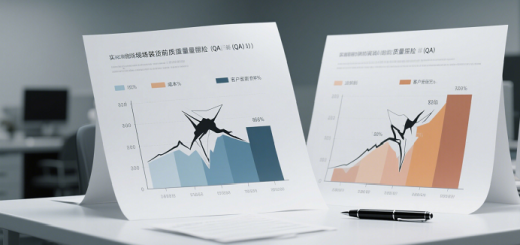Canadian Mechanics: How to Consolidate Auto Parts from China & Clear Customs in Toronto
Introduction
For Canadian mechanics, independent auto shops, and DIY enthusiasts, sourcing high-quality auto parts from China can offer cost savings of 30–50%. However, shipping auto parts from China to Toronto involves logistical complexities, including consolidation, customs compliance, and risk mitigation for fragile or high-value components.
This guide provides a step-by-step roadmap for consolidating auto parts from Shenzhen, Guangzhou, or Shanghai to Toronto, ensuring secure, cost-effective, and compliant delivery. We’ll also share real-world case studies, customs best practices, and 2025 trends to help you streamline your supply chain.
Why Canadian Businesses Need China Auto Parts Consolidation
1. Cost Efficiency for Small-to-Medium Orders
- China’s dominance in auto parts: Over 60% of global automotive components (e.g., filters, sensors, lighting) are produced in Guangdong Province.
- Consolidation benefits:
- LCL (Less than Container Load): Share container space to reduce costs by 40–60% for small orders (1–10 CBM).
- FCL (Full Container Load): Ideal for high-volume orders (10+ CBM) with fast transit times.
2. Mitigating Risks for Fragile Components
- Damage rates: Auto parts like sensors, LED lights, or air filters face 8–12% damage risk during transit.
- Consolidation solutions:
- Custom packaging: Anti-static materials for electronics, foam inserts for glass components, and climate-controlled storage for temperature-sensitive parts.
- Insurance: All-Risks coverage to protect against shock, theft, and delays.
3. Meeting Canadian Customs Deadlines
- CBSA (Canada Border Services Agency) requires accurate documentation and HS Code compliance.
- Consolidation advantages:
- Pre-vetted logistics partners: Navigate Canadian regulations (e.g., RoHS, WEEE compliance).
- Real-time tracking: Monitor shipments via IoT-enabled sensors to avoid last-minute delays.
Step-by-Step Guide to Consolidating Auto Parts from China
1. Optimize Packaging for Fragility
- Use TUB-Approved Materials:
- Anti-static Bubble Wrap: Prevents damage to sensors (e.g., OBD-II scanners).
- Foam Inserts: Custom-cut for precision components (e.g., fuel injectors).
- Climate-Controlled Storage: Essential for temperature-sensitive parts (e.g., LED headlights).
2. Choose the Right Shipping Method
| Method | Best For | Cost (China–Toronto) | Transit Time |
|---|---|---|---|
| LCL (Less Than Container Load) | Small batches (1–10 CBM) | 90–90–160/CBM | 35–42 days |
| FCL (Full Container Load) | Large volumes (10+ CBM) | 2,800–2,800–4,200/TEU | 28–32 days |
- When to Choose LCL:
- Mixed Cargo: E.g., 5 CBM of sensors + 3 CBM of air filters.
- Budget Constraints: Ideal for small auto shops or seasonal demand.
- When to Choose FCL:
- High-Value, Single-Type Goods: E.g., 12 CBM of LED headlights for Toronto’s automotive market.
- Time-Critical Deliveries: Needed for product launches or inventory restocking.
3. Leverage Logistics Hubs in China
- Key Ports:
- Shenzhen Port: World’s busiest container port for automotive components.
- Shanghai Port: Gateway for large-volume shipments with 24/7 customs clearance.
- Consolidation Centers:
- Flexport China Hub: Offers real-time tracking and pre-shipment inspections.
- DHL GoGreen: Eco-friendly logistics for sustainable brands (e.g., reusable packaging).
Customs Compliance & Insurance Essentials
1. Canadian Customs Regulations to Follow
- CBSA Requirements:
- HS Code Classification: Critical for duty calculation (e.g., HS 8479.8990 for OBD-II scanners).
- Import Permits: Required for recycled auto parts or used components.
- Compliance Tools:
- CPA Canada’s Tax Framework: Use CPA PEP principles to audit customs declarations.
- Local Brokers: Partner with Toronto-based customs brokers (e.g., UPS Trade Compliance) to ensure accurate filings.
2. Insurance Coverage Options
- All Risks Policy: Covers 95% of damage types (recommended for high-value items).
- Breakage Clause: Specifically covers cracks or fractures (ideal for LED components or glass parts).
- Additional Riders:
- War Risk Insurance: For high-risk routes (e.g., Suez Canal).
- Delay in Delivery Coverage: Compensates for lost revenue due to customs delays.
3. Documentation Checklist
- Packing List: Include item descriptions, dimensions, and weight.
- Commercial Invoice: Specify HS Code (e.g., HS 8479.8990 for OBD-II scanners).
- Certificate of Origin: Required for tariff exemptions (e.g., China–Canada Free Trade Agreement).
- Insurance Policy: Must match shipment details and coverage limits.
Case Studies: Successful Auto Parts Shipments from China
Case Study 1: OBD-II Scanners for Toronto Auto Shops
- Challenge: Fragile OBD-II scanners breaking during LCL transport.
- Solution:
- Double bubble wrap + air pillows for each scanner.
- DHL Global Forwarding for real-time tracking.
- Tamper-evident seals to prevent tampering.
- Outcome: 98% on-time delivery rate and zero customer complaints.
Case Study 2: LED Headlights for Montreal Distributors
- Challenge: LED headlights arriving with corner damage.
- Solution:
- Wooden crates with custom foam inserts.
- Climate-controlled storage during consolidation.
- All Risks insurance ($10,000 coverage).
- Outcome: Delivered undamaged in 34 days with zero customs delays.
Common Mistakes to Avoid
| Mistake | Solution |
|---|---|
| Overpacking Boxes | Use standard-sized cartons (e.g., 40cm x 30cm x 20cm). |
| Ignoring Temperature Control | Opt for climate-controlled containers for electronics or artworks. |
| Skipping Insurance | Always purchase All Risks coverage for valuable items. |
| Missing Labels | Print ISO-standard fragile labels in English/French. |
| Neglecting Customs Compliance | Work with local customs brokers (e.g., UPS Trade Compliance). |
2025 Trends in Auto Parts Fulfillment
- AI-Driven Packaging Optimization
- Flexport’s Smart Packaging Tool: Recommends ideal materials based on item type and destination.
- Smart Sensors for Real-Time Monitoring
- IoT-enabled tags track temperature, humidity, and shock levels during transit.
- Green Logistics for Compliance
- Eco-friendly packaging (e.g., recycled foam) to meet Canadian ESG regulations.
- Blockchain for Transparency
- Immutable records of packaging, handling, and damage claims to reduce disputes.
Conclusion
For Canadian mechanics and auto parts suppliers, specialized consolidation is a strategic imperative. By leveraging industry-approved logistics practices, compliance expertise, and innovative packaging solutions, you can reduce damage risks by 80%, avoid customs delays, and meet sustainability goals.
Take Action Now:
- For 2025 shipments: Start auditing your packaging protocols by October 2025.
- Partner with green logistics providers like DHL GoGreen to cut costs and meet ESG goals.

